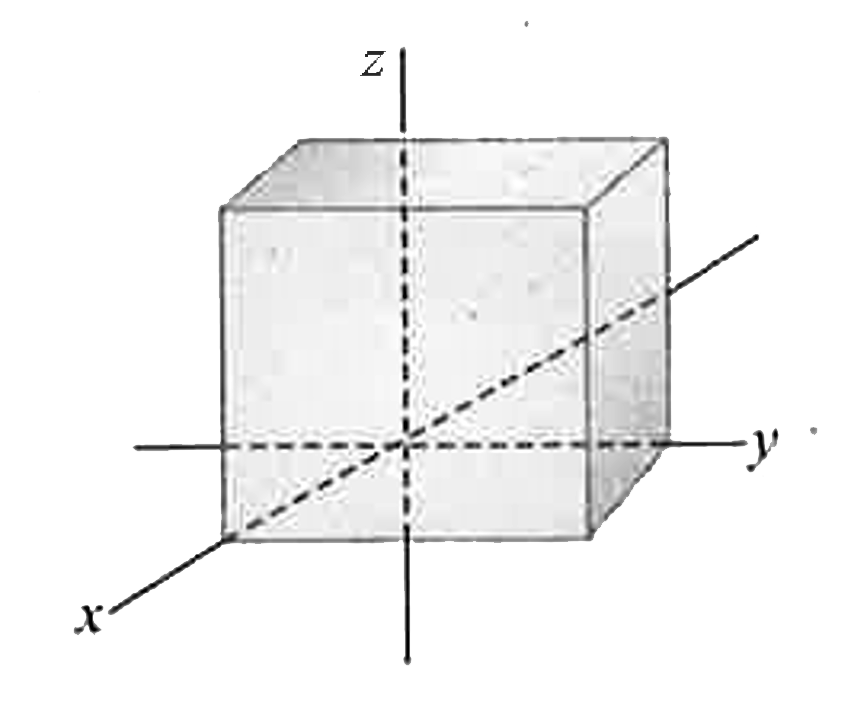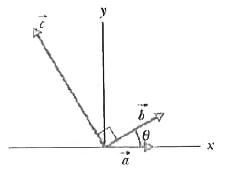→B:4.00m,at+65.0∘
→C=(−4.00m)ˆi+(−6.00m)ˆi
→D:5.00m,at−235∘
(a)→R=(−3.18m)ˆi+(4.72m)ˆj,(b)5.69m,(c)−56.0∘ (with-axis) or (5.69∠124∘)
Topper's Solved these Questions
- BOOK - RESNICK AND HALLIDAYCHAPTER - VECTORS EXERCISE - PRACTICE QUESTIONS39videos
VECTORS
- BOOK - RESNICK AND HALLIDAYCHAPTER - VECTORS EXERCISE - CHECKPOINT5videos
VECTORS
- BOOK - RESNICK AND HALLIDAYCHAPTER - UNITS AND MEASUREMENT EXERCISE - PRACTICE QUESTIONS (MATRIX-MATCH)11videos
UNITS AND MEASUREMENT
- BOOK - RESNICK AND HALLIDAYCHAPTER - WAVE - IIEXERCISE - PRACTICE QUESTIONS (INTEGER TYPE)5videos
WAVE - II
Similar Questions
For the following three vectors, what is 3→C.(2→A×→B) ?
→A=2.00ˆi+3.00ˆj−4.00ˆk
→B=−3.00ˆi+4.00ˆj+2.00ˆk→C=7.00ˆi−8.00ˆjView SolutionA force →F=(3.00N)ˆi+(7.00N)ˆj+(7.00N)ˆk acts on a 2.00 kg mobile object that moves from an initial position of →di=(3.00m)ˆi−(2.00m)ˆj+(5.00m)ˆk to a final position of →df=−(5.00m)ˆi+(4.00m)ˆj+(7.00m)ˆk in 4.00 s. Find (a) the work done on the object by the force in the 4.00 s interval, (b) the average power due to the force during that interval, and (c) the angle between vectors →di and →df.
View SolutionTwo travelling sinusoidal waves described by the wave functions
y1=(5.00m)sin[π(4.00x−1200t)]
and y2=(5.00m)sin[π(4.00x−1200t−0.250)]
Where x,y1andy2 are in metres and t is in seconds. (a) what is the amplitude of the resultant wave ? (b) What is the frequency of resultant wave ?View SolutionTwo travelling sinusoidal waves described by the wave functions
y1=(5.00m)sin[π(4.00x−1200t)]
and y2=(5.00m)sin[π(4.00x−1200t−0.250)]
Where x,y1andy2 are in metres and t is in seconds. (a) what is the amplitude of the resultant wave ? (b) What is the frequency of resultant wave ?View SolutionThe acceleration of a particle moving only on a horizontal xy plane is given by →a=3tˆi+4tˆj, where →a is in meters per secondsquared and t is in seconds. At t = 0, the position vector →r=(20.0m)ˆi+(40.0m)ˆj locates the particle, which then has velocity vector →v=(5.00m/s)ˆi+(2.00m/s)ˆj. At t = 4.00 s, what are (a) its position vector in unit-vector notation and (b) the angle between its direction of travel and the position direction of the x axis?
View SolutionAt the instant the displacement of a 1.50 kg object relative to the origin is →d=(2.00m)ˆi+(4.00m)ˆj−(3.00m/s)ˆk, its velocity is →v=−(6.00m/s)ˆi+(3.00m/s)ˆj+(3.00m)ˆk and it is subject to a force →F=(6.00N)ˆi−(8.00N)ˆj+(4.00N)ˆk. Find (a) the acceleration of the object, (b) the angular momentum of the object about the origin, ( c) the torque about the origin acting on the object, and (d) the angle between the velocity of the object and the force acting on the object.
View SolutionA force →F=(3.00N)ˆi+(7.00N)ˆj+(7.00N)ˆk act on a 2.00 kg mobile object that moves from an initial position of →ri=(3.00m)ˆi−(2.00m)ˆj+(5.00m)ˆk to a final position of →rf+(5.00m)ˆi+(4.00m)ˆj+(7.00m)ˆk in 4.00 s. Find the work done on the object by the force in the 4.00 s interval.
View SolutionThe cube in figure has edge length √2m and is oriented as shown in a region of uniform electric field , in newtons per coulomb, is given by (a)6.00ˆi,(b)−2.00ˆj,and(c)−3.00ˆj+4.00ˆk . (d) what is the total flux through the cube for each field ?
 View Solution
View SolutionThe cube in figure has edge length √2m and is oriented as shown in a region of uniform electric field , in newtons per coulomb, is given by (a)6.00ˆi,(b)−2.00ˆj,and(c)−3.00ˆj+4.00ˆk . (d) what is the total flux through the cube for each field ?
 View Solution
View SolutionThe three vectors in have magnitudes a=3.00m,b=4.00m,andc=10.0mand angle θ=30.0∘. What are (a) the x component and (b) the y component of →a, (c ) the x component and (d) the y component of →b, and (e) the x component and (f) the y component of →c ? If →c=p→a+qb, what are the values of (g) p and (h) q ?
 View Solution
View Solution

